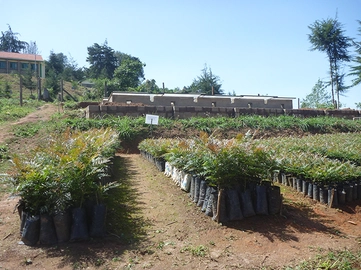Planting trees: No all-round solution for climate-change mitigation
September 24, 2020.
Trees are able to sequester and store carbon. Re-planting trees in degraded ecosystems thus seems like a straightforward way to curb increasing CO2 concentrations in the atmosphere. Last year, Bastin et al. claimed that global tree restoration could be the most effective solution to mitigate climate change. But is it as easy as that?
Different dimensions to planting trees
In fact, the climate benefit of trees depends on locality and species and there are many more dimensions to planting trees than just carbon gains. Major issues are:
Soil carbon
Global ecosystems differ in how much car-bon they store below ground. This needs to be factored in when estimating the carbon benefits of tree planting. Humid tropical savannas for example, store much more carbon below than above ground due to the extensive roots of savanna grasses. As was shown for boreal forest, soil carbon gains also depend on the planted tree species.
Albedo
Trees, especially evergreen conifers, have a relatively high albedo, meaning they absorb solar energy which is then emitted as heat. By contrast, snow, bare ground and grasses reflect solar energy and have a lower albedo. Thus, planting trees in high-latitude or high-elevation areas that would otherwise be covered by snow or consist of open ground can lead to warming that is more severe than the cooling caused by carbon sequestration.
Tree density
Open-canopy ecosystems such as savannas and grasslands naturally have low tree density due to factors such as poor soils as well as natural fire and browsing regimes. Planting additional trees in such ecosystems may interrupt ecological processes, reduce biodiversity, and lead to increased carbon losses from fire.
Biodiversity and ecosystem processes
Trees affect ecological processes such as groundwater and surface-water recharge. The positive or negative effects on ecosystems and people strongly depends on locality and tree species. For example, the ongoing trend to plant exotic trees can have negative effects on soil, water balance, and tree-as-sociated faunal species such as insects and birds.
People
Land that could support trees is often used as agricultural or grazing land. Hence, the costs of tree restoration and maintenance are augmented by the opportunity costs of foregone local land-use alternatives. Moreover, effectively promoting restoration requires clear land property and use rights as well as mechanisms to solve land conflicts that prevail in many regions with alleged restoration potential.
Long-term effects to be scrutinized
Tree planting has many benefits for nature and people if carried out in an ecologically sound manner adapted to the local situation on the ground. However, tree and forest growth will also be affected by a changing climate, possibly leading to shorter stands, higher turnover rates and less carbon storage. Hence, the long-term outcome and cost-effectiveness of tree planting vis-à-vis other mitigation strategies require further scientific scrutiny. Overall, it remains more important than ever to reduce human carbon emissions and protect the last remaining natural forests as reservoirs of carbon and biodiversity.
For further information, see:
Bastin et al. (2019): The global tree restoration potential. Science 365: 76-79. DOI: 10.1126/science.aax0848
Luedeling et al. (2019): Forest restoration: Overlooked con-straints. Science 366: 315. DOI: 10.1126/science.aay7988
Veldman et al. (2019): Comment on “The global tree res-toration potential”. Science 366: eaay7976. DOI: 10.1126/science.aay7976



